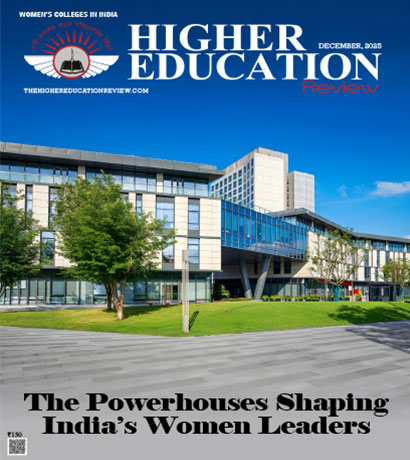Building a Stronger Employer Brand to attract top talent
 Attracting top talents is one of the major challenges for organizations in the present job market that is highly competitive. What serves as a magnet for high-caliber candidate is the strong employer brand as it can act as a powerful tool in such endeavors. Furthermore, it also helps in differentiating the enterprise from its competitors. To build a robust employer brand we should implement strategic approaches which integrate organization culture, employee experience, communication & values. In this article let us look at important strategies for building an employer brand which resonates with top talent.
Attracting top talents is one of the major challenges for organizations in the present job market that is highly competitive. What serves as a magnet for high-caliber candidate is the strong employer brand as it can act as a powerful tool in such endeavors. Furthermore, it also helps in differentiating the enterprise from its competitors. To build a robust employer brand we should implement strategic approaches which integrate organization culture, employee experience, communication & values. In this article let us look at important strategies for building an employer brand which resonates with top talent.
Defining Company values & culture
The base for a strong employer brand can be seen in clearly defined organization values & culture. These factors must be authentic and they should reflect the true essence of the company. Organizations should articulate what they exactly stand for. They should also articulate the kind of workplace environment they provide and this comprises the unique attributes of the company and its differentiating factors which makes it stand out from the other players in the landscape. Therefore, organizations can attract candidates who align with the companies values & are more likely to grow within the organization, by highlighting the aforementioned aspects.
"In my experience, one of the most innovative strategies I’ve used to attract highly qualified personnel is to focus on company culture and values during the recruitment process," says Sai Blackbyrn, CEO, Coach Foundation.
"The right people are drawn to organizations with strong identities—where they can thrive and grow. By showcasing our differentiating values, we establish the foundation to attract those high performers," he adds.
Employee Value Proposition
The next important aspect for building a strong employer brand includes an effective Employer Value Proposition. The EVP comprises rewards as well as benefits an employee should obtain in return for his/her performance. This includes tangible as well as intangible benefits such as salary, health benefits, retirement plans & work-life balance, career development opportunities, along with a supportive work environment. Designing a compelling Employer Value Proposition involves understanding what are the present & potential employees value the most & make sure that those elements are communicated prominently via numerous channels.
Leveraging Employee Advocacy
The best ambassadors of any organization’s brand are its employees. Therefore, their genuine testimonials as well as positive experiences can influence potential candidates to a greater extent. Encouraging employee advocacy consists of fostering a culture and here the employees feel empowered as well as valued to share their experiences and this can be achieved via initiatives such as employee referral programs, or social media engagement where they can feature employee stories on the organization’s website. The organizations’ credibility as well as attractiveness to top talent is enhanced when employees speak positively regarding their workplace.
Investing in Employee Development
Most often top talent is attracted to companies which provide growth as well as development opportunities. Investing in employee development programs which include mentorship, training as well as career advancement initiatives can help in improving the employer brand and hence companies must highlight these opportunities in their employer branding efforts which helps in displaying the success stories of those employees who have reached the next levels within the organization. And this facilitates to attract ambitious candidates, foster loyalty & retain hardworking and passionate existing employees.
Emphasizing Diversity & inclusion
One of the important aspects for attracting top talents include the commitment to diversity as well as inclusion. Candidates should look for employers who promote a diverse & inclusive workplace. Organizations should always demonstrate their commitment via inclusive hiring practices, initiatives which support underrepresented groups & diversity training programs. What can position the company as one of the forward-thinking & equitable employer and can appeal to broader range of candidates is showcasing diversity & inclusion efforts in employer branding materials.
Engaging Leadership in Employer Branding
Another aspect that plays a significant role in shaping & promoting the employer brand is leadership. Leaders must actively participate in employer branding initiatives. They should act as role models as well as ambassadors of the organization’s values. The involvement of leaders can involve sharing insights, as well as experiences via blogs, speaking engagments & social media posts. When a leader is visibly committed to building a strong employer brand, it delivers the message & encourages other employees to engage in branding efforts.
Examining case studies of organizations that implemented successful employer branding strategies can offer valuable insights & inspiration. For instance organizations such as Netflix, Google & Patagonia are well renowned for their strong employer brands. Patagonia’s commitment to employee activism & environmental sustainability resonates with future employees who make purpose-driven work as their first priority. What attracts top talents who value autonomy & excellence is Netflix’s emphasis on freedom & responsibility which is also coupled with its unique culture deck.
"More than perks or promotions, top performers seek purpose, autonomy, and impact," says Lou Reverchuk, Co-Founder & CEO, EchoGlobal.
Creating a strong employer brand is a multifaceted task and this needs a strategic as well as consistent approach. Continuous monitoring & leadership engagement are highly crucial to maintain the employer brand. Therefore, a strong employer brand attracts top talent, fosters a loyal as well as motivated workforce which drives organizational success in the present competitive market, ultimately.

